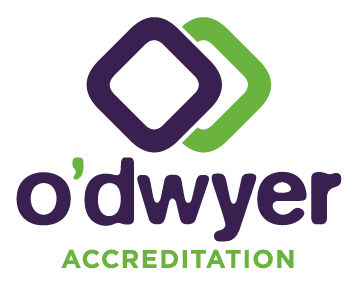
So you’ve been given the job of getting NATA accreditation for your laboratory, but you’re stuck on where to get started. It seems like an arduous process, and you want to know you are going about it correctly and not wasting time. Perhaps you’ve contacted NATA, and they referred you to a bewildering array of documents on their website, telling you to get back to them when you have developed your QMS Quality Management System.
But before you start pulling the proverbial cart before the horse, take note: there are other steps you need to go through first to get clear on your plan for securing NATA accreditation. Follow these nine steps to ensure that the application process is as smooth, efficient and productive as possible.
1 Work out your NATA Accreditation budget
Getting NATA accreditation is a financial investment. Not only are their application fees and ongoing fees for accredited labs, you need to factor in equipment, calibrations, staff time, and management time. The first thing you need to do is calculate how much room there is in the budget to invest in this project – how much can you justify spending on it based on the estimated benefit and return to the business?
Once you have a general idea of your budget, you can start getting into the details of Step 2. If you’re developing a business case for NATA accreditation, we can help with scoping and defining what the costs will be.
2 Decide on your scope of NATA Accreditation
If you are already 100 percent clear about which tests you are going to get accreditation for, you can skip this step. Whether you’re getting accreditation to service existing clients or chasing new work, there are a few questions to consider when deciding which tests you need NATA recognition for.
Are you going for accreditation for every test that you do or just a selection? Which ones do your clients want NATA accreditation for? Will some tests be easier to get accreditation for than others? Do you have a priority list? NATA can work with your priorities by letting you know which tests will lead to extra costs, helping you budget appropriately and optimise your time management. You can apply for accreditation for some tests first and then add others in the future once you know how the system works.
Factors to consider for deciding which areas of testing to apply for are:
- What your customers need/want and the areas you want to expand into
- How accreditation-ready each test is
- Budget – does the benefit of getting accreditation and the investments you need to make justify the cost? Can you afford it?
It is worth looking up the scope of accreditation of a few competitors in the NATA Directory to see how they are written. If you describe the tests you want accreditation for in their language, NATA will be able to assess your application much quicker and direct it to someone who can get the ball rolling straight away.
3 Get organised
Many labs come to us for help not just with the nitty-gritty of getting NATA accreditation but also later when they find that they are having difficulties keeping up with their NATA responsibilities. We often find that their main problem is disorganised records and documents. Setting up a robust system for your records right at the start will stand you in good stead for a successful assessment and will save you money and time down the track. Grab a handy guide to setting up your files.
If you’re not sure what records you really need to keep, get in touch to see how we can help.
4 Work out where the GAPs are
Doing a GAP Analysis against the lab accreditation standard (and any other requirements you may need to meet) will help you develop a clear priority list for your NATA accreditation preparations. This can end up being one of the most valuable tools in your preparations for accreditation.
- Make a table from the accreditation requirements.
- Review your CURRENT operations versus those requirements and document both what you do and don’t comply with.
- Record questions that you need to follow up with experts and get their clarification
Making the judgement about whether your current practices comply with accreditation requirements is the most difficult part of this process. It is important to strike a balance between being “good enough” and wanting to make everything the best it can possibly be. Setting your sights too high can make attaining NATA accreditation seem impossible!
5 Fine-tune the technical tasks
It might not seem so to the uninitiated, but developing a QMS is relatively straightforward. The problems that stop labs from getting NATA accreditation are always technical issues. NATA will focus much of its attention on sample handling, testing, and reporting.
Using your “Accreditation-Ready” matrix, prioritise the tasks needed for those tests to be ready for NATA to review. Some will have a budget associated with them, so they may have to be scheduled for when money becomes available.
Typical deal-breakers for tests are:
- No proficiency testing results
- Poorly trained/incompetent staff
- Equipment is not calibrated
- No clear method written
- No regular quality control
To ensure you steer clear of any of these snags, you may need to invest a bit of time into fine-tuning the technical tasks central to your lab’s operation. If you need support with this, O’Dwyer Accreditation can help assess what areas need improving and also train your staff.
6 Develop your quality system
Now that you’ve spent some time on fine-tuning the technical tasks that already happen in the lab or will need to happen in order to meet the regulations, you can focus on developing your quality management system procedures. Develop any processes or procedures that are missing from your system. You can determine what is missing by referring back to the GAP analysis you did earlier. Remember, a good GAP analysis is one of the most useful parts of your preparations.
If you haven’t already, start conducting internal quality system audits. If your staff are time-poor or you do not have a dedicated auditor, consider engaging an audit professional. The value of having an outside review of your systems is something many of our clients appreciate. This is also a good time to hold a management review meeting to ensure that you have thought about the bigger picture issues that will come up when accreditation is granted, like how you will manage the extra workload and setting up your billing processes.
7 Get real value from the advisory visit
When you think you are ready for some feedback from NATA, email them a copy of the quality manual and the list of tests you want accreditation for. NATA will come and do an Advisory Visit at your laboratory. This is a fairly informal process, but NATA will give you feedback on your quality system and any obvious gaps in the technical operations. Don’t miss this great opportunity to ask questions about specific accreditation criteria and how to apply them in your laboratory. Make a list of questions ahead of the meeting that you want to discuss with them. Take good notes on the issues of concern to you, as much of the discussion will probably not find its way into their written feedback.
8 Make the most of your NATA Assessment
Once you have sorted out any issues raised during the advisory visit, NATA will arrange an assessment. This assessment will be far more technical in focus than the advisory visit, as a volunteer assessor from a similar industry to yours will review all of the technical aspects of your laboratory (the technical assessor). Meanwhile the NATA auditor will be reviewing the quality system in detail. It’s important that you make the most of this visit and prepare for it well. Some tips:
- Find out who your assessors are and a bit about their background so you can build rapport at the outset.
- Be ever-present during the assessment or ensure a senior staff member is present. Allowing assessors to speak with junior staff unsupervised leads to many ill-founded non-conformances.
- Own the exit discussion—this is your chance to clarify details and correct the record if they have gotten the wrong end of the stick. Make sure your key personnel, especially senior management, are able to get there.
- Listen actively and ask clarifying questions for details about every non-conformance mentioned. You need enough detail to be able to go back and find what the assessor saw or you will not be able to identify the root cause and fix it.
For more handy details on how to nail the assessment and assessment follow-up communications, read steps 1-5 in our previous blog, 10 tips to avoid NATA Paper Warfare.
9 Stay focused post-assessment
NATA will leave you with a detailed assessment report, including non-conformances. These ALL need to be addressed before NATA grants you accreditation. Sometimes this stage can drag on a bit, so be patient! Here are our top tips for navigating this stage well:
- Be economical with your response – only respond to what you really need to: not to non-urgent observations or recommendations
- Explain your approach to your team – ensure they also take an economical approach in their replies
- Stick to the report even if it seems different to what was raised on the day. Read what the Cs and Ms actually say and respond only to those issues, not to how you perceived the assessor’s take on an issue.
For extra tips on making the most of this stage, read through steps 5-10 in this blog.
Get Accreditation!
Once all of the assessment findings have been settled, NATA has a few internal processes to go through. Ultimately, NATA will send you a certificate that you can proudly put on display. You can start issuing NATA-endorsed test reports and using the NATA logo in your marketing materials from the date of accreditation.
Keep Going
No you don’t get to just sit back and relax after all that! NATA returns on a regular basis to reassess your laboratory and quality system. Read more about NATA’s accreditation procedures here.
Get Help
If any of the above steps looks daunting or hard to achieve, O’Dwyer Accreditation’s expert consultants are here to help. We’ve had the joy of helping dozens of labs go through the application process from start to finish. We provide inside knowledge from many years working for NATA and for a variety of labs dealing with NATA. Many labs find working with us on their first NATA application to be a fantastic investment, saving time, improving their quality system and training up staff along the way.
Get in touch today if you’re ready for some help.


